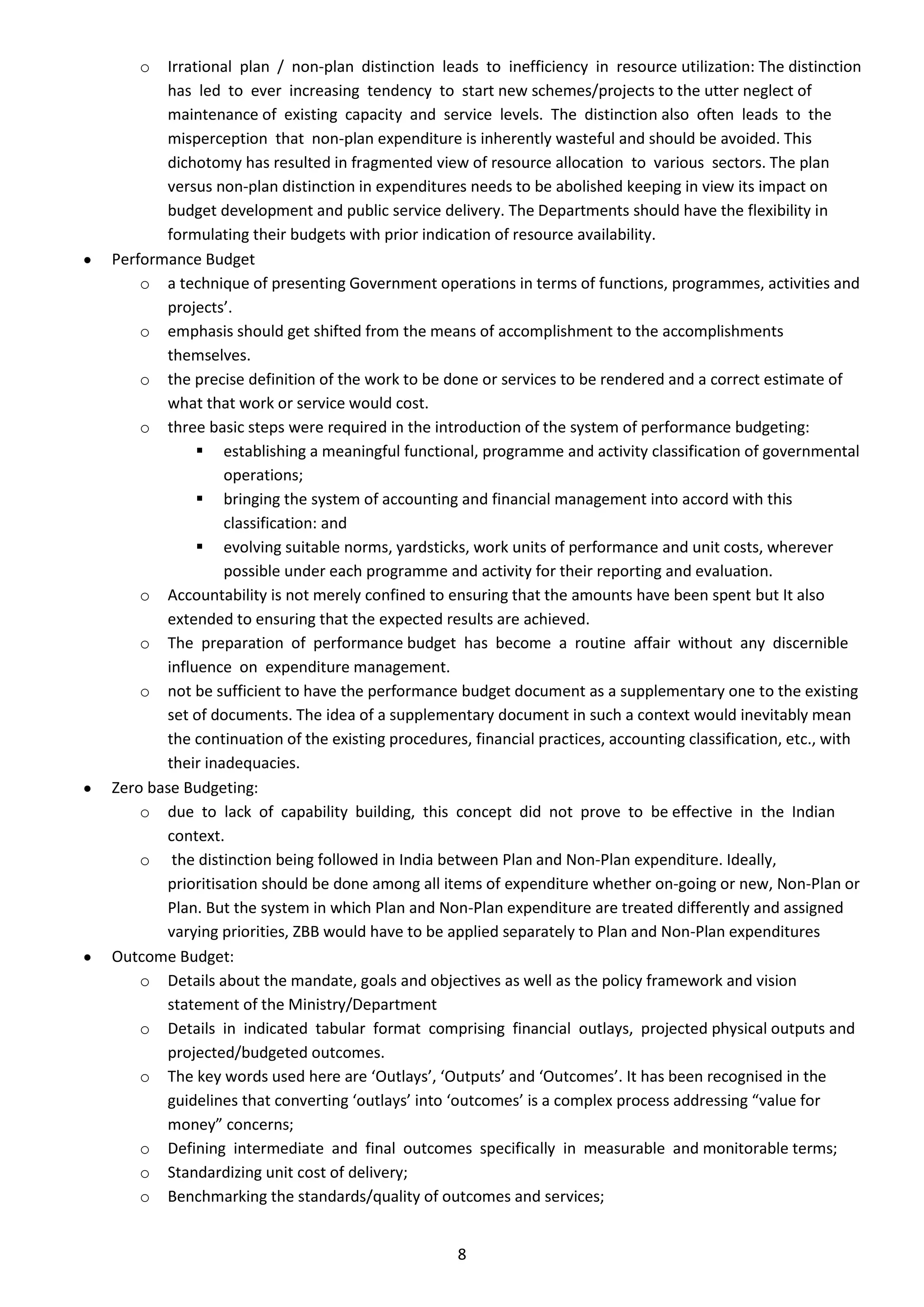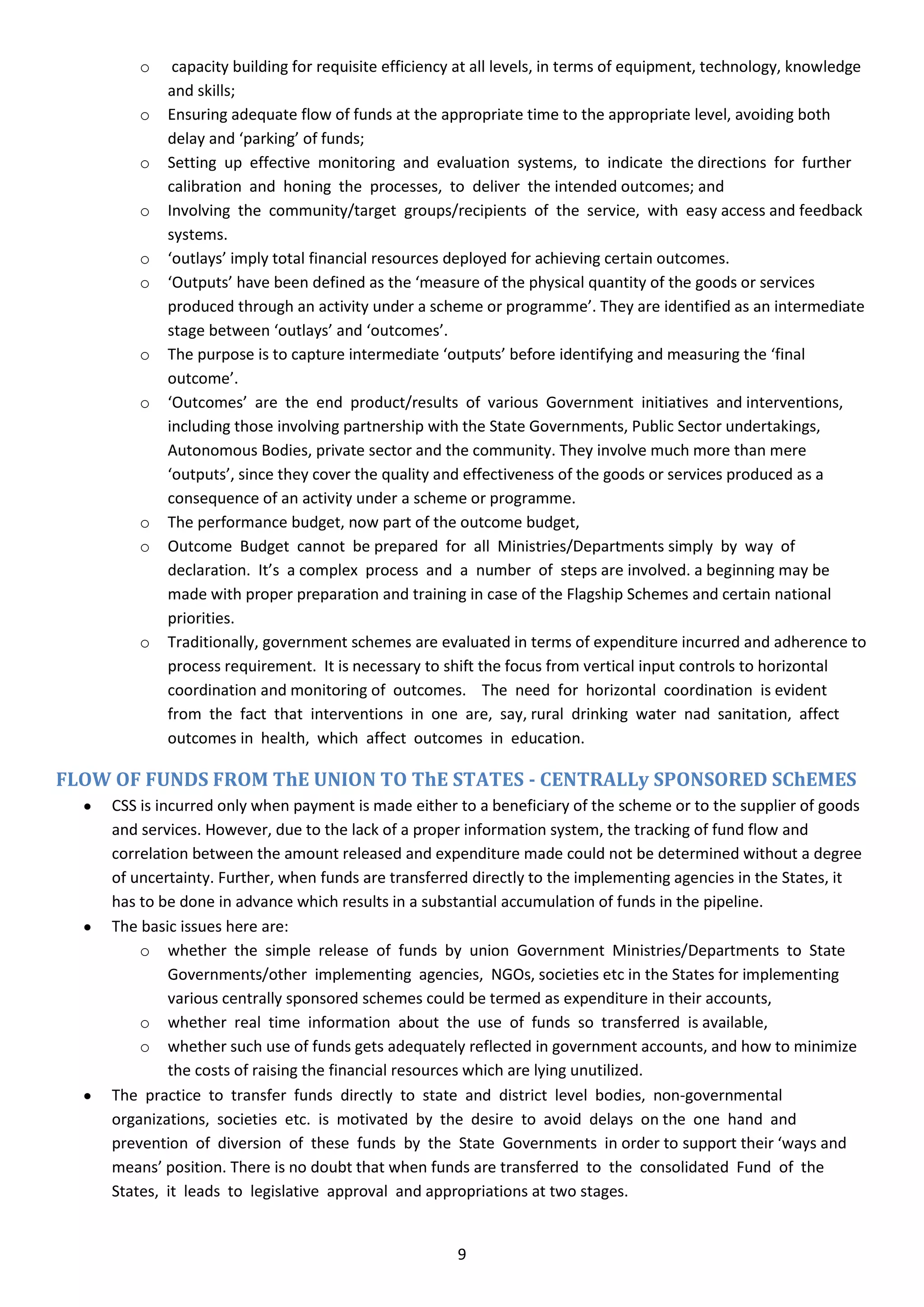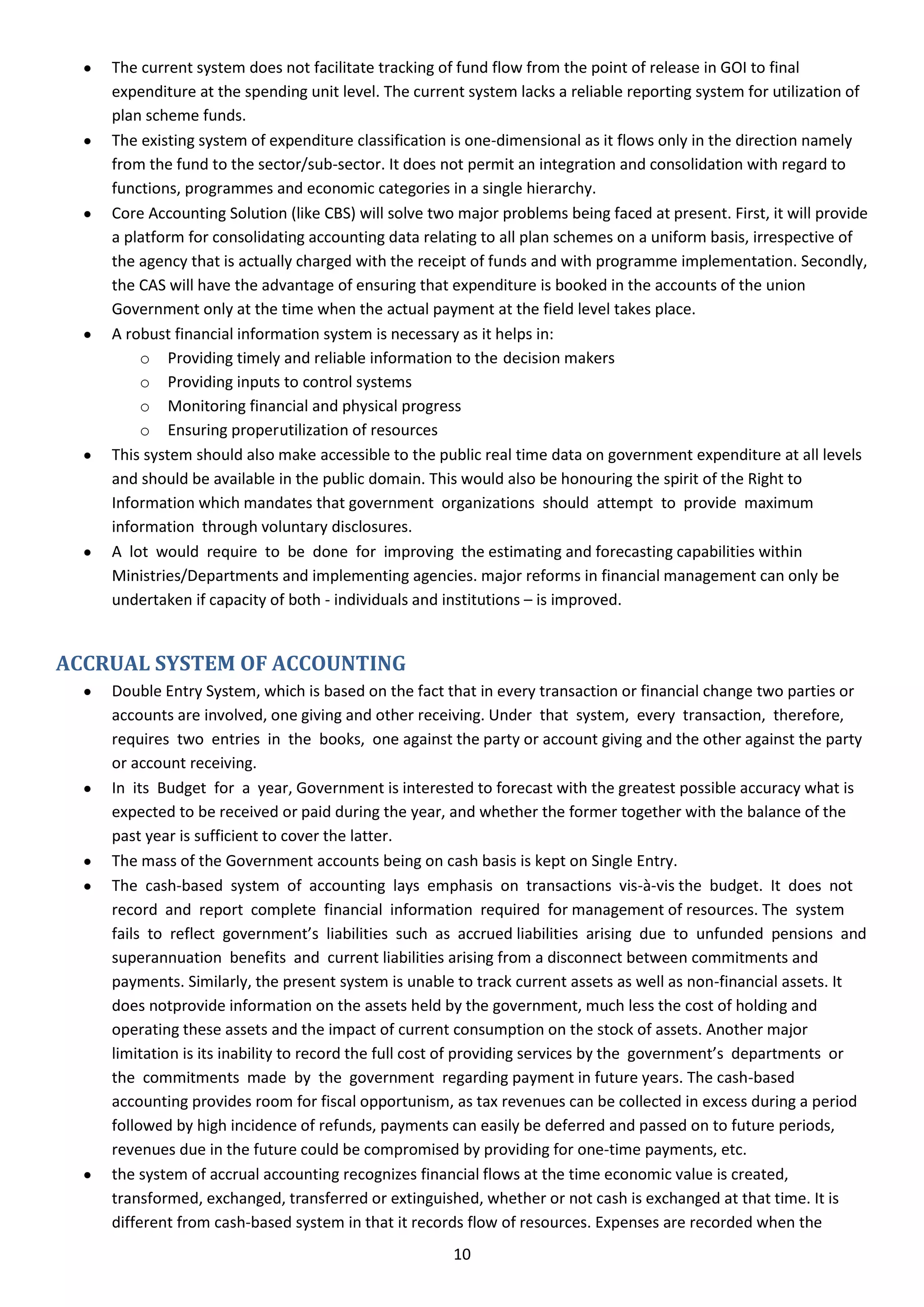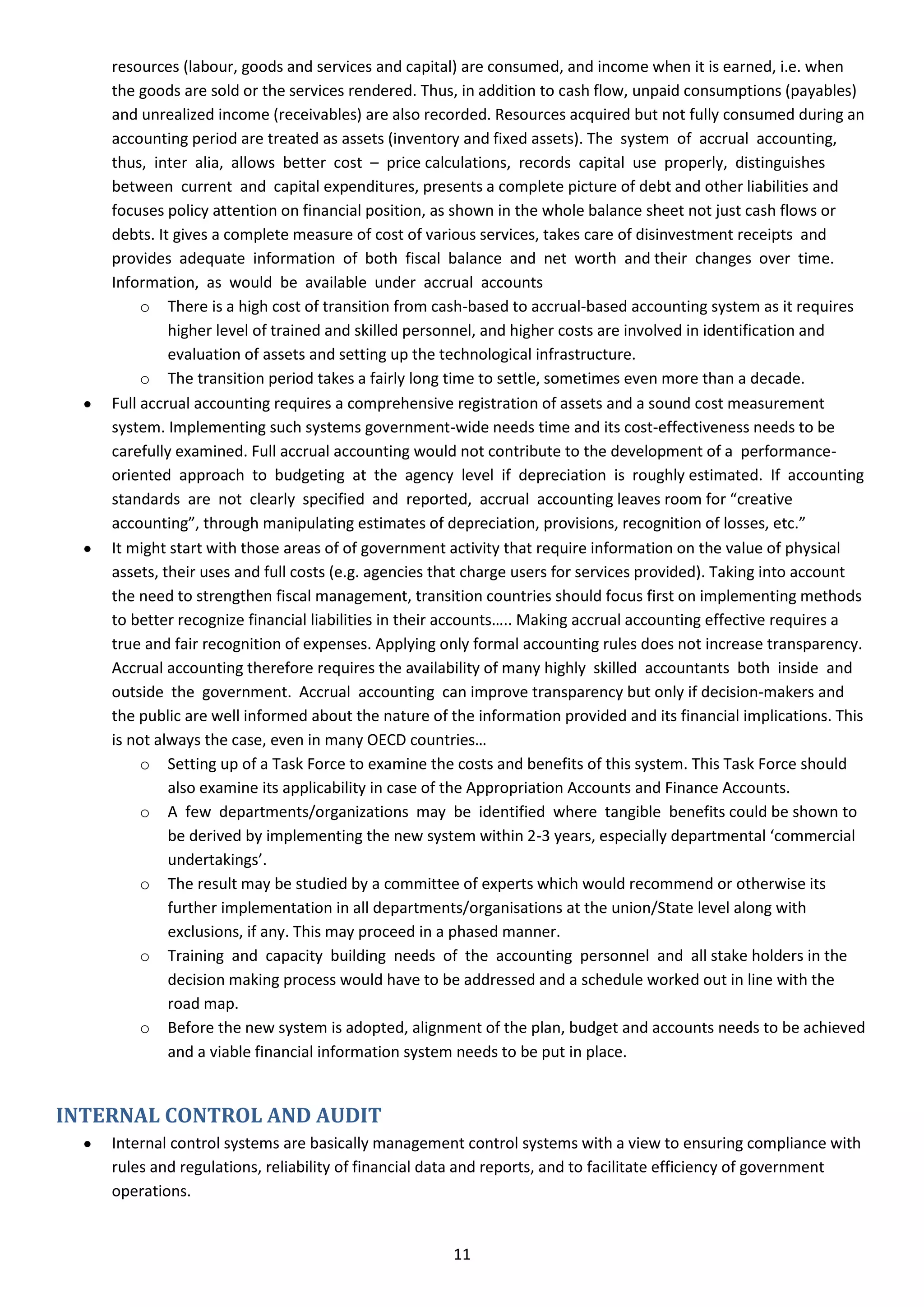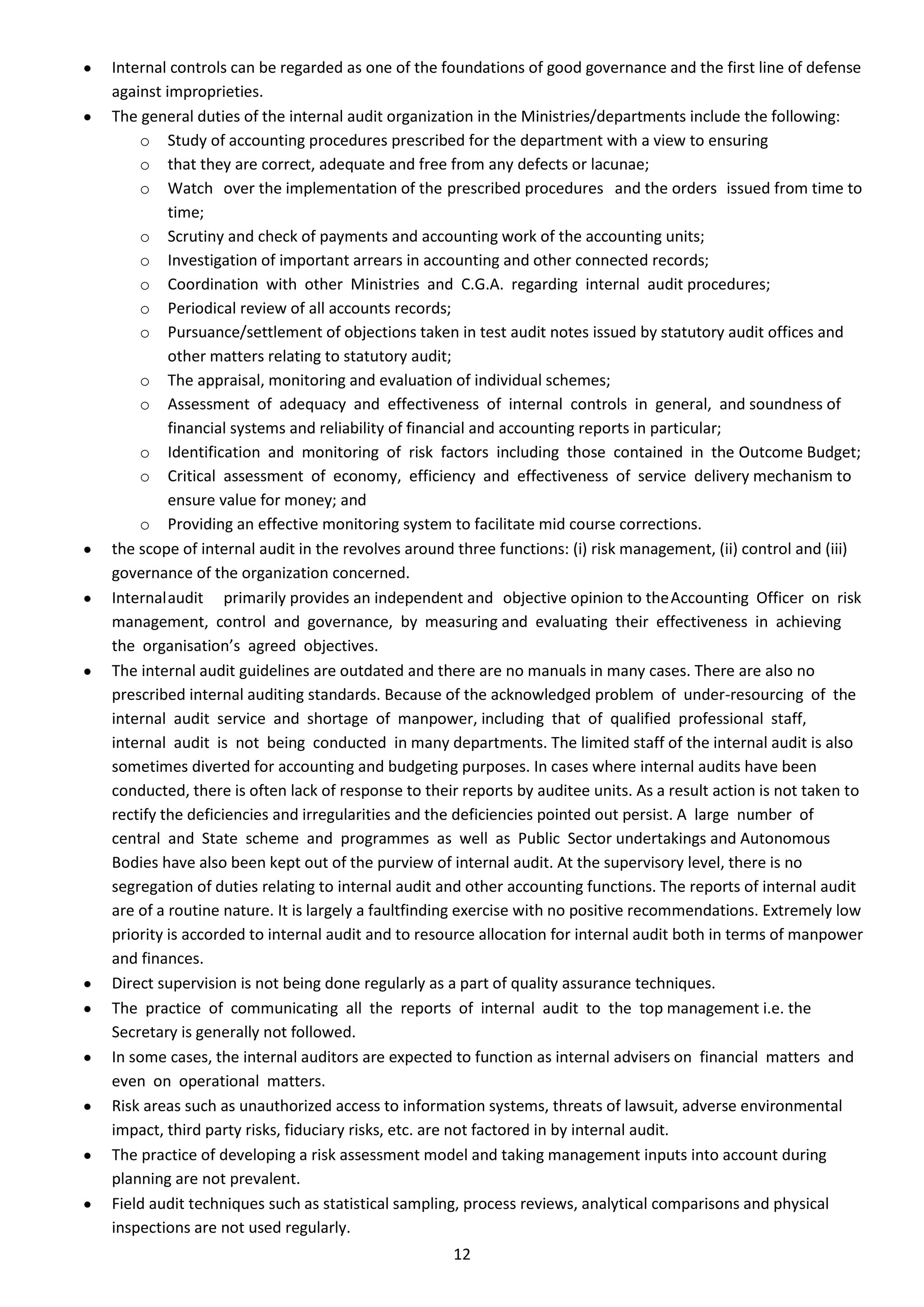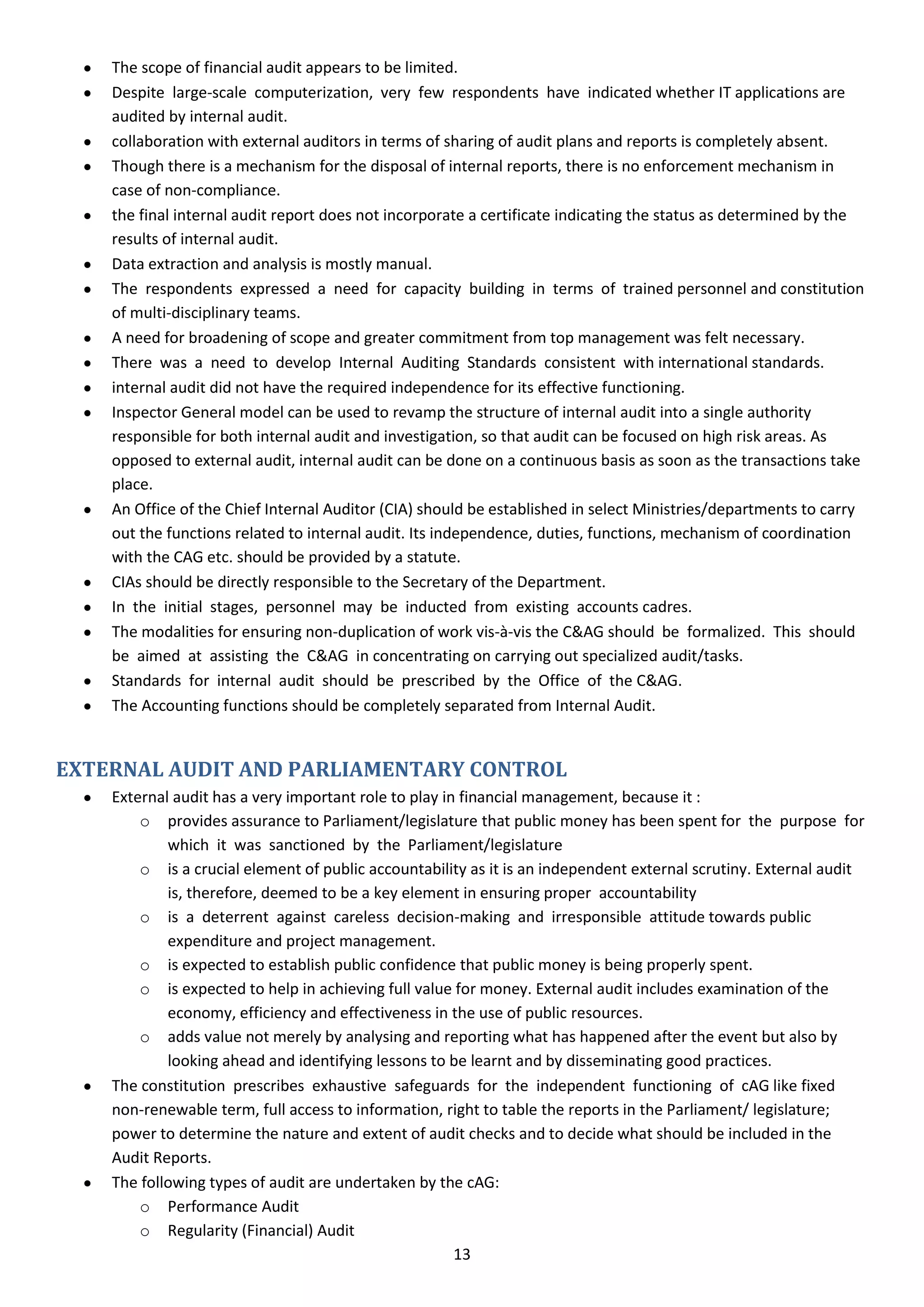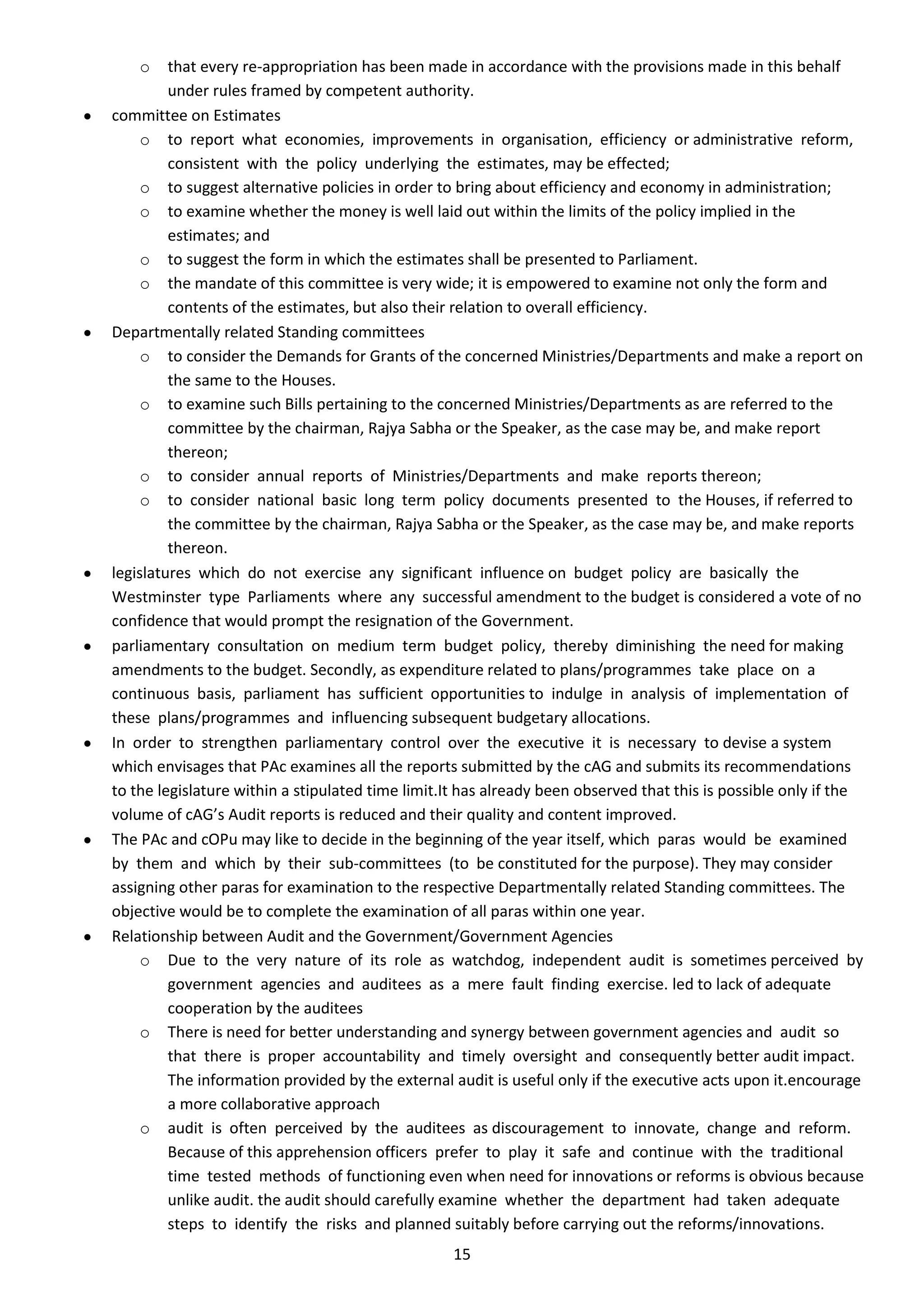The document discusses various aspects of public financial management including:
1) It outlines the key components of a public financial management system including resource generation, allocation, and expenditure management.
2) It describes the evolution of budgeting approaches from line-item budgets to performance and zero-based budgeting.
3) It discusses elements of modern budgeting reforms including medium-term budget frameworks, increased transparency, and a focus on results rather than just inputs.


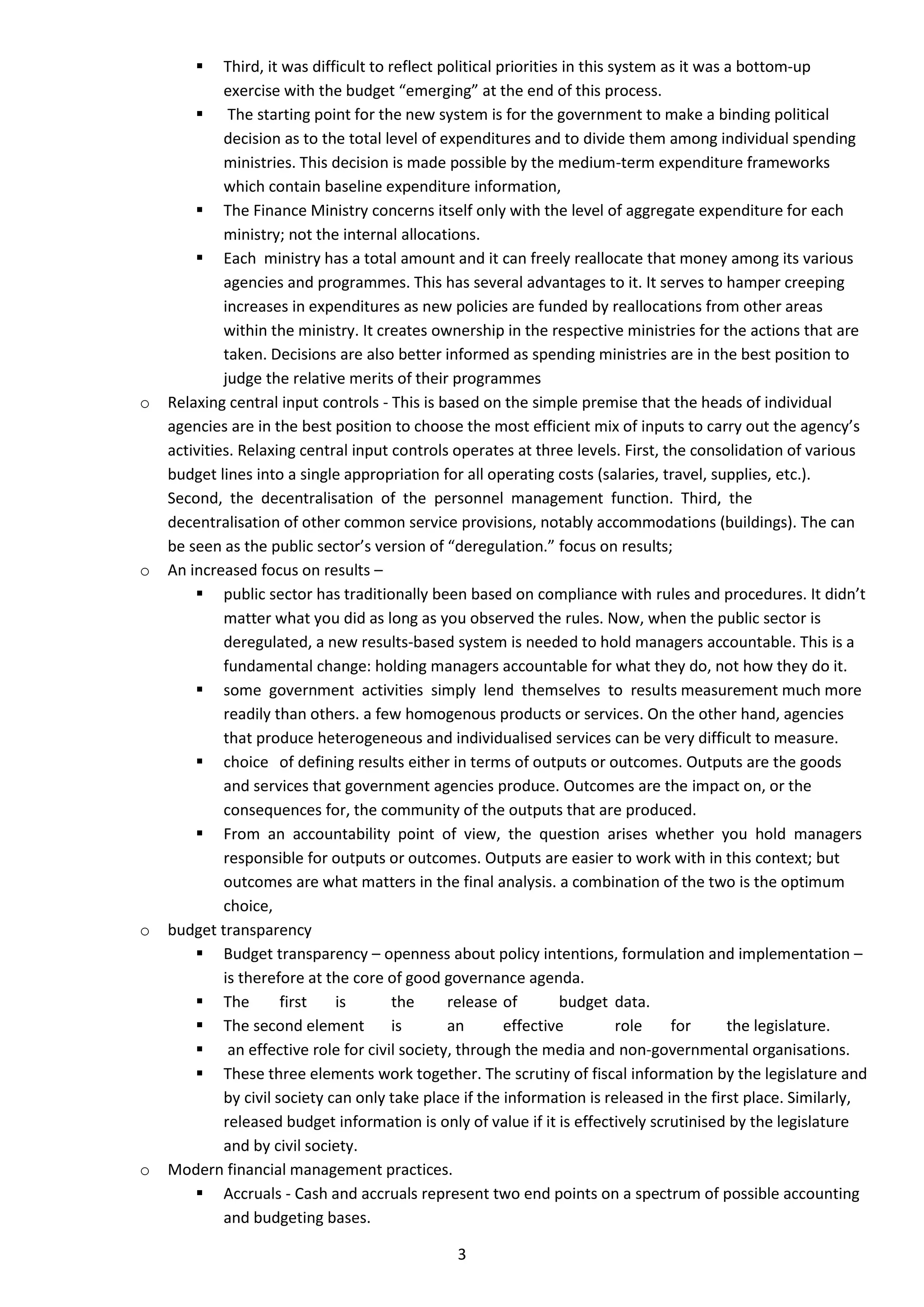
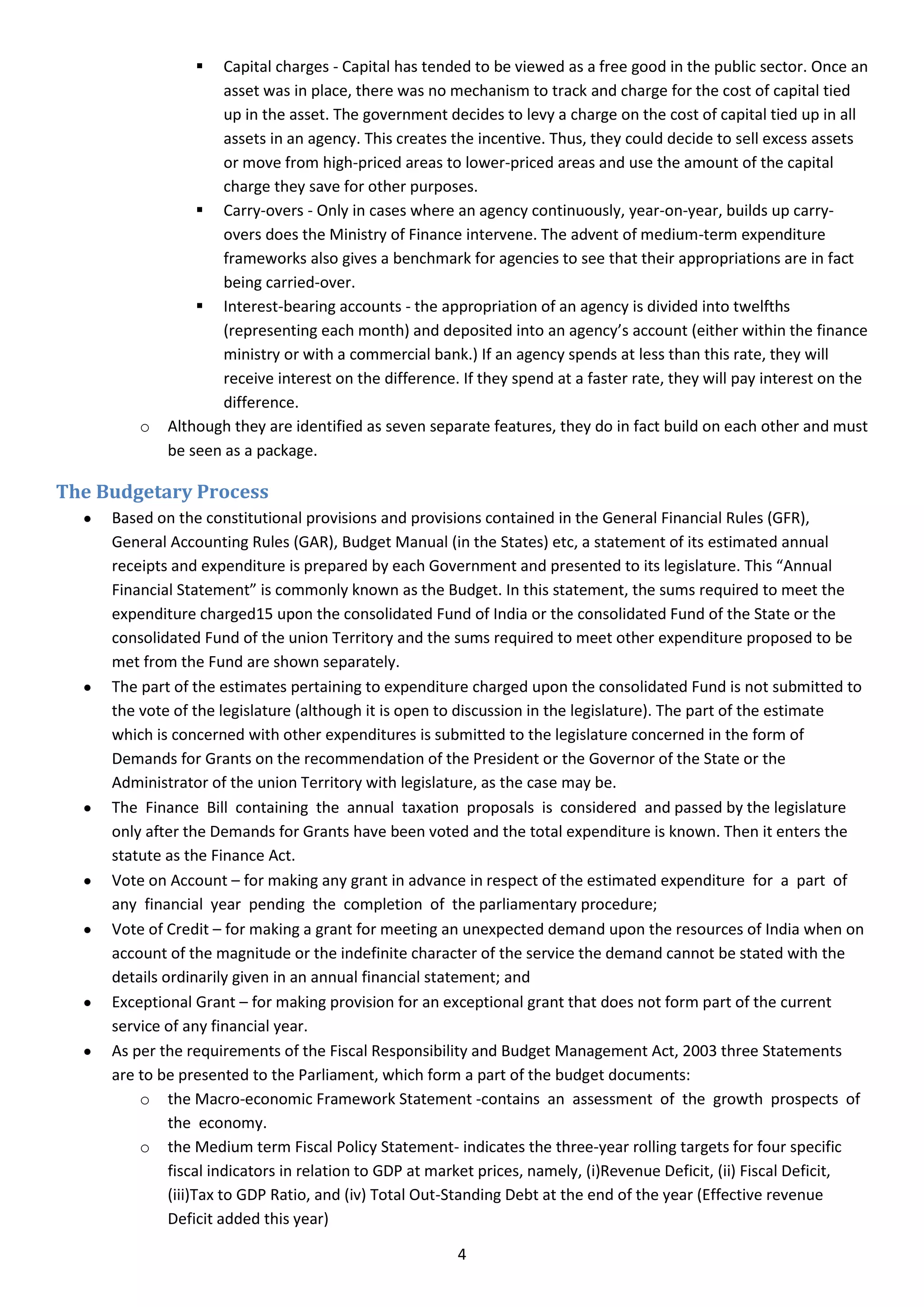
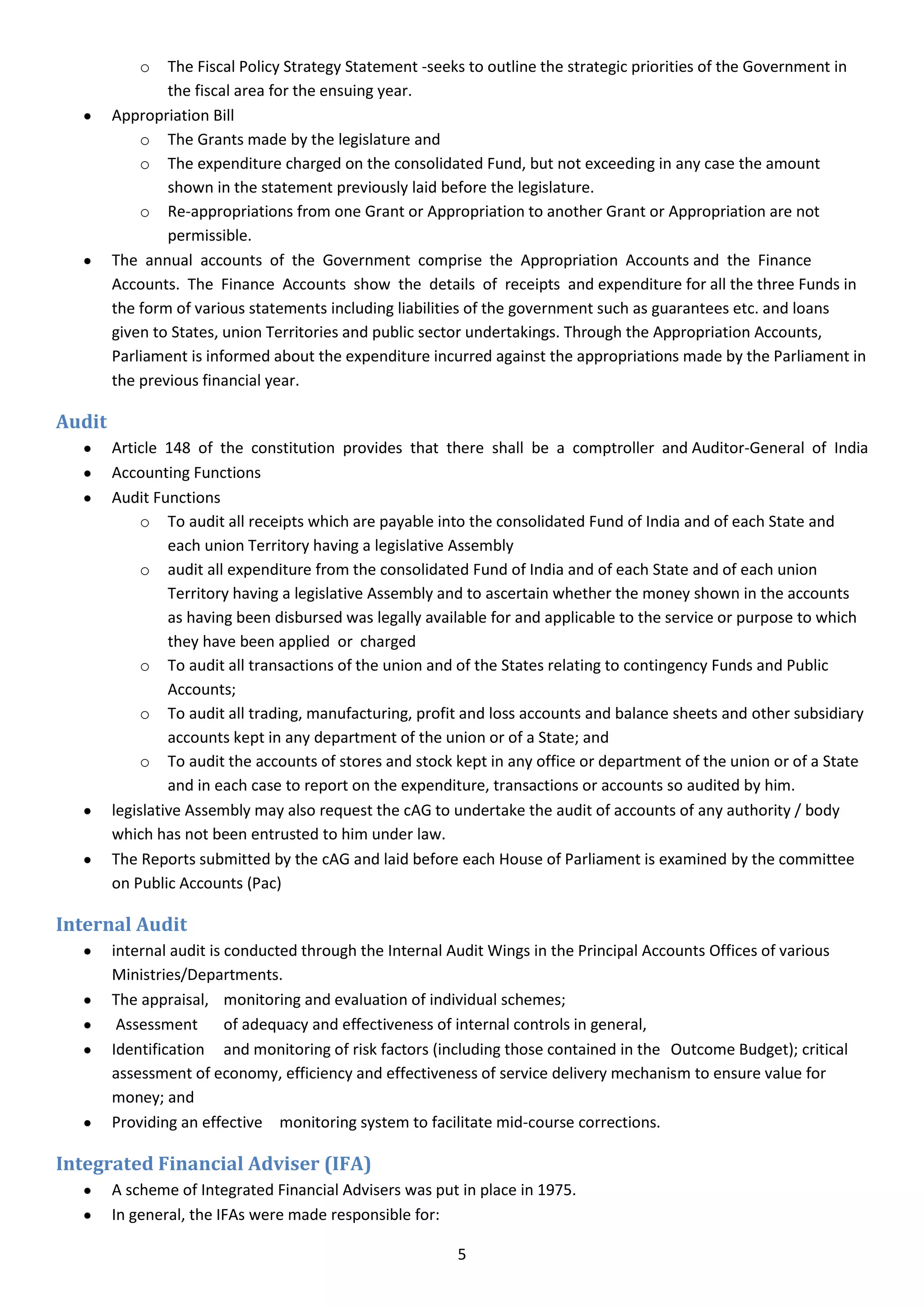
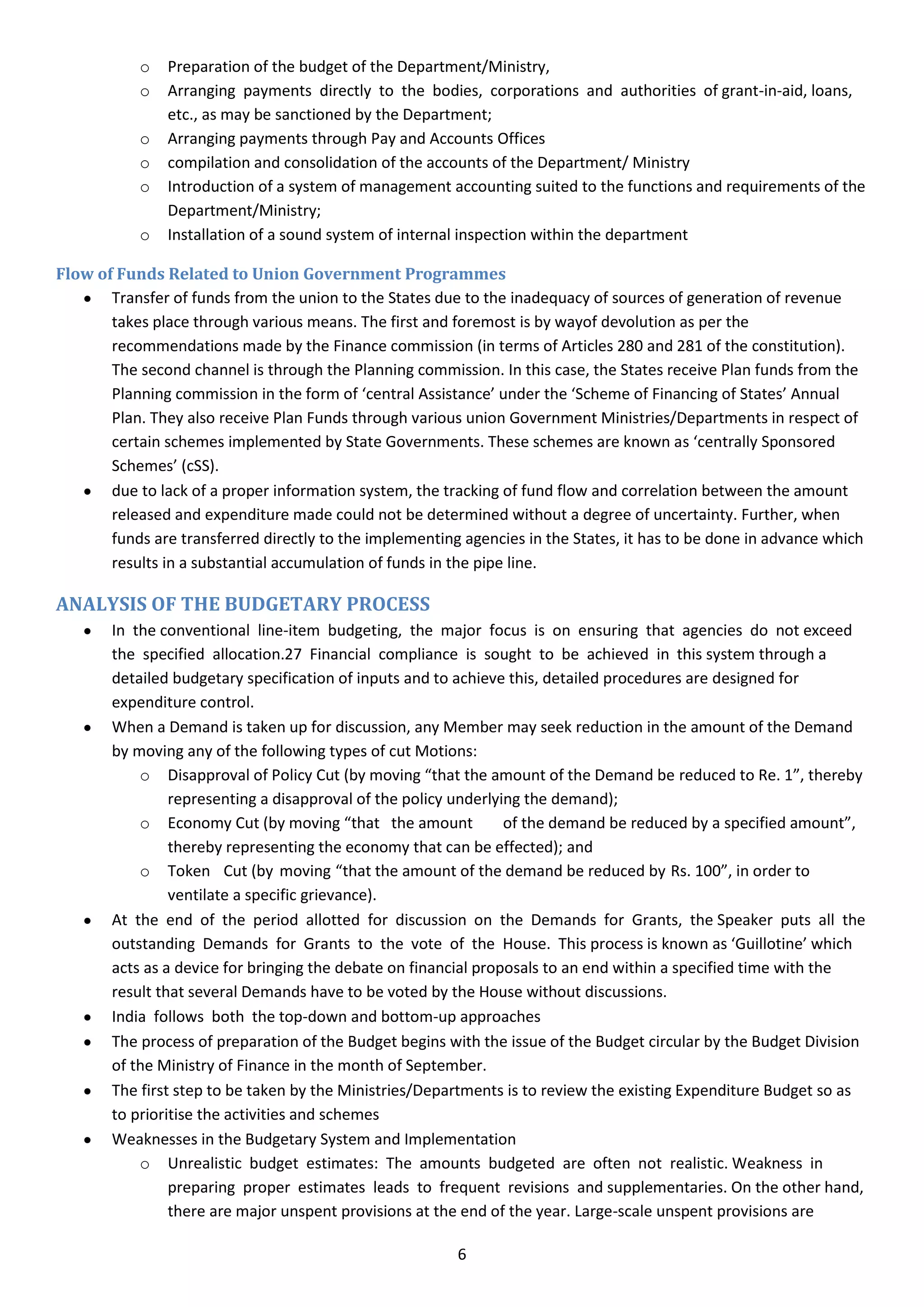
![indicative of lack of efficiency in programme management at the departmental level in an annual
budget cycle and undermine efficient use of public money which is one of the major objectives of
any budgeting system. Root cause of the problem lies in the prevalent method of formulation of the
annual budget by getting details from different organizations/units/agencies and fitting them into a
pre-determined aggregate amount leading to unrealistic budget estimates.
o Delay in implementation of projects: Resources are being spread thinly with only token provisions in
some cases, often leading to inordinate delays in execution of projects. time and cost overruns
have been a major problem affecting the central sector projects. Projects and schemes should
be included in the budget only after detailed consideration.
o Skewed expenditure pattern: The expenditure pattern is skewed, with a major portion getting spent
in the last quarter of the financial year, especially in the last month.Modified cash Management
System:
Obtaining greater evenness in the budgeted expenditure within the financial year,
Reducing rush of expenditure during the last quarter,
Reducing tendency of parking of funds.
Effectively monitoring the expenditure pattern.
a Monthly Expenditure Plan (MEP) has to be worked out for each Demand for Grant. MEP for the
month of March may not exceed 15 per cent of the budgeted provision [Budget Estimate];and
MEP for the months of January-March may be so fixed that the QEA for the last quarter may not
exceed 33 per cent of the budgeted provision;
o Inadequate adherence to the multi-year perspective and missing ‘line of sight’ between plan
and budget. Multi-year budgeting addresses the basic problem faced in budgeting, - how to
integrate planning and budgeting. The preparation of rolling multi-year expenditure planning leads
to improvement in budget preparation by providing advance expenditure ceilings to the
departments, increasing predictability of resource availability, and by improving efficiency of
public spending. It is considered as the cornerstone of performance oriented budgeting, linking
resources to policy objectives that defines performance. In India, the Five year Plans provide the
basis for a medium-term multi-year perspective for resource allocation. On the basis of this, each
year the Planning commission, in consultation with the Ministry of Finance, allocates annual limits
for plan expenditures to each Ministry/Department. It has been noticed, however, that often, major
projects and schemes are launched by government which are not provided for in the plan. This
results in change in allocation for other projects and schemes thereby diluting plan
objectives.Another weakness of the current budget exercise is the absence of a clear link between
the plan and the budget.
o No correlation between expenditure and actual implementation: funds lie in the pipeline with
various project authorities and there is considerable lag before they are actually utilized. Thus
the accounts do not reflect the correct position as regards the implementation of government
schemes and programmes.
o Mis-stating of financial position: The present system of release of funds to project authorities
outside the government often leads to parking of funds which is often resorted to in order to
prevent lapsing of funds. This leads to idle funds being maintained outside government accounts
and thus portrays an incorrect picture of government funds besides causing loss of interest to
government.
o Ad hoc project announcements: Indiscriminate announcement of projects/schemes not
included in the plan/budget is regularly made, often without proper consideration and detailing.
o Emphasis on compliance with procedures rather than on outcomes: At present, government
departments often measure their performance in relation to the expenditure targets laid down in
the budget without adequate regard to outputs and even less to outcomes. Furthermore, little
emphasis is placed on efficient utilization of resources. Check PB, ZBB and OB.
7](https://image.slidesharecdn.com/14-financialadministration-120828140947-phpapp02/75/14-financial-administration-7-2048.jpg)
